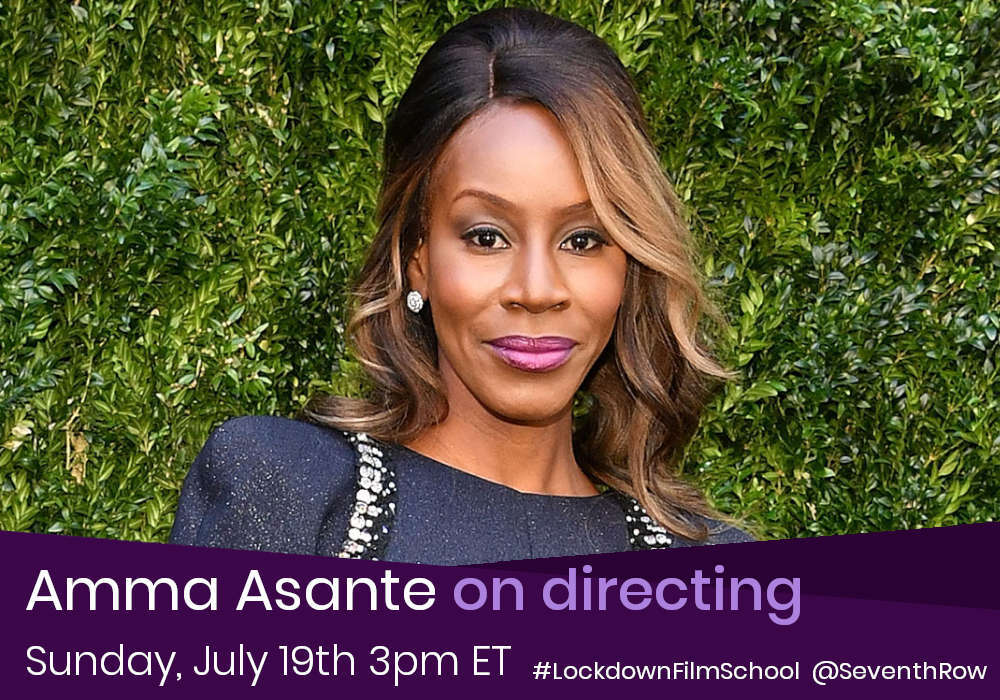Amma Asante details the long road to making her passion project, Where Hands Touch, and explains the importance of nuance in her controversial love story. Listen to us discuss the film on our podcast here.
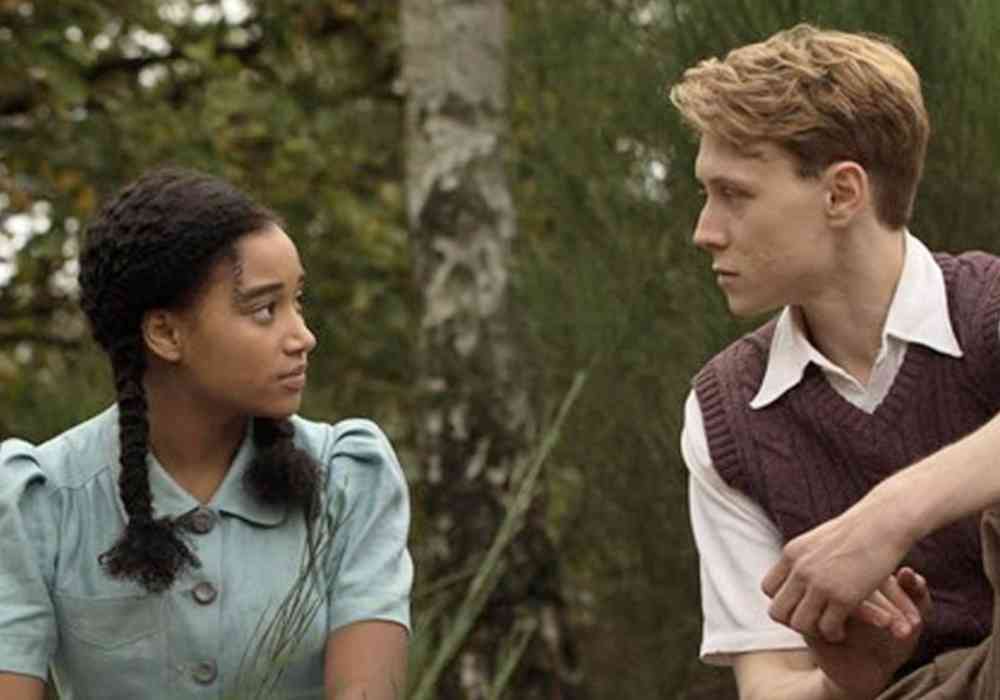
Often underappreciated and always reliable, Amma Asante has crafted some of the smartest commercial period pieces of the past few years. These films — Belle, A United Kingdom, and her latest, Where Hands Touch — are each insightful portraits of race, period, and relationships, wrapped in the sturdy and familiar casing of an awards-friendly drama. Asante uses accessible, commercial filmmaking to ask big questions, spreading those ideas to a wider audience than a niche arthouse drama might..
In Where Hands Touch, rising star Amandla Stenberg plays Leyna, a mixed race girl in Nazi Germany who falls in love with Lutz (George McKay), a member of the Hitler Youth. Asante tells this story to uncover a forgotten part of history: the so called “Rhineland bastards”, children of Aryan mothers and African soldiers. This left children like Leyna in a unique position: her mother intrinsically connects her to the local community of Aryan Germans, but they refuse to fully accept her. She is not persecuted to the same extent and with the same certainty as the Jewish people around her, but she’s still far from safe. She clings to her German heritage both for her safety and her pride, but even the country she loves won’t acknowledge her as its own.
The romance between Leyna and Lutz was a point of controversy with many dissenters before the film had even been screened. But Asante is never one to pass over a nuance, and she uses this controversial premise to boldly explore questions of systemic evil. It is clear to us, as a modern audience, that the actions of the Nazis and the Hitler Youth in the film are evil. However, Asante is interested in looking beyond an act of evil to explore its roots. How much of this evil is inherent and how much is learned through the government’s brainwashing? Is it possible to unlearn evil that is so deeply ingrained? If government pressures can drive someone to commit an act of violence against their own morals, then how much power does the individual have? What kind of systemic pressure and manipulation drove good people to support mass genocide?
When I talked to Asante about the film, she responded to the criticisms her film’s premise has faced, as well as taking me through the long and winding journey toward getting Where Hands Touch made.
Seventh Row (7R): Where Hands Touch has been a passion project of yours for 12 years. Can you tell the story of its conception and its journey to production?
Amma Asante: When my producer told me about the existence of these black children in Nazi Germany, I was really quite shocked that I didn’t know about them. It suddenly dawned on me that there were all these histories of other black people like me in Europe that I didn’t know about. I realised I knew more about black American history than I knew about my own.
[click_to_tweet tweet=”‘There were all these histories of other black people like me in Europe that I didn’t know about. I realised I knew more about black American history than I knew about my own.” quote=”‘There were all these histories of other black people like me in Europe that I didn’t know about. I realised I knew more about black American history than I knew about my own.”]
When I finished making my first film, A Way of Life, I started to become obsessed with finding out more about black people in Europe prior to the ‘60s. In my Googling, this phrase kept coming up: ‘Rhineland bastards’. After a while, it dawned on me that this term was referring to children that were born, between the wars in Germany, of white German mothers and black African soldiers from the French colonies. It kind of blew my mind.
Knowing what was happening to the Jewish people at this time in Germany, I thought ‘What on earth must be happening to these black children?’ But actually, while they were having a really bad life in Germany, it was nowhere near as bad as what was happening with the Jews. These black children were walking this strange tightrope. Not all of them were in a [concentration] camp. They didn’t have the mass machine of murder facing them that Jewish people had. Many were intrinsically connected to the local community because of their mothers. They’re a part of this society, there but not accepted; part of it, but somehow not quite belonging. But they want to be associated with their country.
[click_to_tweet tweet=”‘While these black children were having a really bad life in Germany, it was nowhere near as bad as what was happening with the Jews. They were walking this strange tightrope.” quote=”‘While these black children were having a really bad life in Germany, it was nowhere near as bad as what was happening with the Jews. They were walking this strange tightrope.”]
Then it was a question of how I’m going to learn enough about this world in order to write a script and portray it on screen. It was a long period of research. Understanding every detail of what the world was like for three groups of people: Jewish people, Germans who were white and lived working class lives, and children of colour.
It was supposed to be my second film, but it was a struggle against the powers that be. I had to find a way to prove that this project was something I could do. My script was being passed around and people knew about it. When Belle was looking for a filmmaker to turn that into something that could be made on the big screen, it was sent to me. I didn’t want to do it at first. To be honest with you, Where Hands Touch had not long before had some of its early financing collapse. It suddenly dawned on me that if I could prove I could do Belle, I might actually be able to get financing back for Where Hands Touch.
Very soon after I finished Belle, David Oyelowo, a friend of mine, came to me with A United Kingdom and said, “I really need your help on this.” It was kind of at an awkward time in my life, but I thought, “If I do this epic piece of work, there’s no way in hell that financiers could say that Where Hands Touch is too big.” So I took that on.
At that point, I got about 85% of our budget for Where Hands Touch — and then the financing collapsed again. This was in 2016. We got somebody to come in and finance it and save the day, but they still didn’t come in with quite enough. At this point, we had a team working for us. We had crew already in our pre-production offices. Amandla was on board… My producer kindly placed his entire fee into the film, and I put my fee into the film, as well, so that we could somehow close the gap.
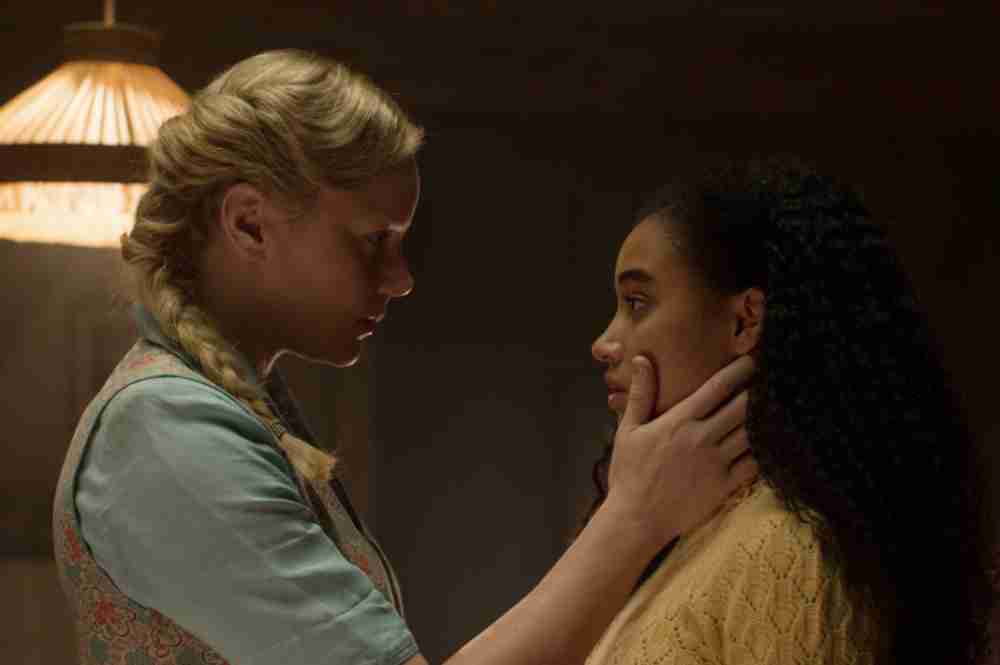
7R: Your last three films all examine the workings of prejudice at different times in history, and each uses a love story as the lens through which to deconstruct these issues. Why is romance such a good way in for your thematic interests?
Amma Asante: To be honest, it’s not. I can see how it looks like that. I am a romantic. But the two movies that came before — Belle and A United Kingdom — came to me because of Where Hands Touch: because of the love story, because of that historical backdrop… Because of those different things that I’d done well enough in the Where Hands Touch script, Belle came to me. And because I did Belle well enough, A United Kingdom came to me. They put you in a territory that they think that you’re good at and more of that comes.
[click_to_tweet tweet=”‘Because of the WHERE HANDS TOUCH script, BELLE came to me. Because I did BELLE, A UNITED KINGDOM came to me. They put you in a territory and more of that comes.'” quote=”‘Because of the WHERE HANDS TOUCH script, BELLE came to me. Because I did BELLE, A UNITED KINGDOM came to me. They put you in a territory and more of that comes.'”]
When you come from an underrepresented group like I do — a black, female director —, you’re not simply saying, “This is the next job I’ll do.” You have to make your way through the industry to get to the point where you can tell a story and 100% speak to your own voice.
[click_to_tweet tweet=”‘When you come from an underrepresented group, you’re not simply saying, ‘This is the next job I’ll do.’ You have to make your way through the industry to get to the point where you can 100% speak to your own voice.'” quote=”‘When you come from an underrepresented group, you’re not simply saying, ‘This is the next job I’ll do.’ You have to make your way through the industry to get to the point where you can 100% speak to your own voice.'”]
The truth is, if I hadn’t been trying to get Where Hands Touch made, it’s unlikely that Belle would have been made by me, and neither would A United Kingdom. Both of them were examples of why I wanted to do my passion project, to prove I’m worthy.
I do think that love is an interesting factor in this story. Romantic love is very definitely incorporated, but a really important element of the story, for me, is the love between a mother and a daughter. A really key element running through the story is that the mother protects the child in the first half of the movie, and then the child has to take on that baton for the second half.
I also needed someone to show everything that Leyna was and everything that she was not. I needed that opposite, that white voice of privilege.
And I needed to show that she was going to defy everything that Hitler wanted for her: to have fertility, to have companionship.
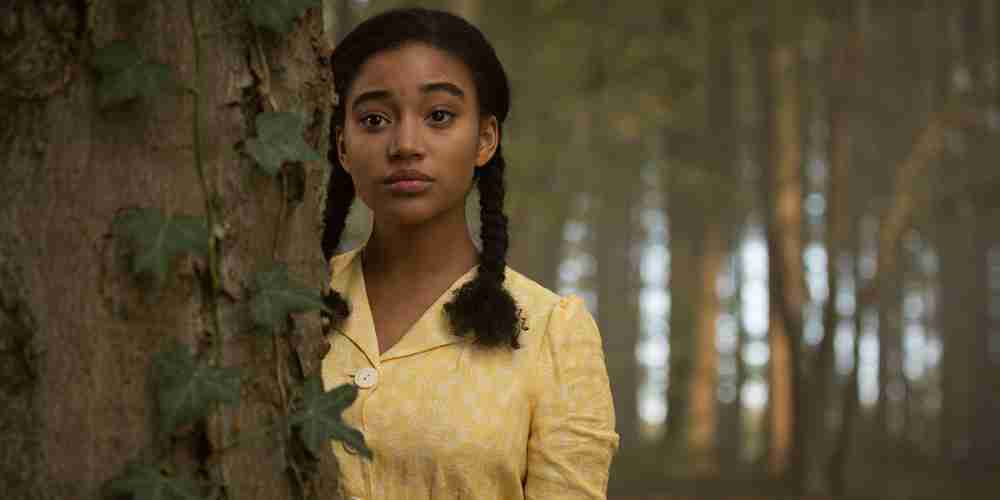
7R: I heard that your first point of contact with Amandla Stenberg was through her studies and her activism work rather than her acting, and that’s what convinced you that she could pull off this role. Why was it so important for your that your lead actress should be able to approach the role of Leyna from such a strong intellectual standpoint?
Amma Asante: I needed her to understand that this film needs nuance. Nuance can mean different things to different people. I’m often, as a filmmaker, criticised for not being nuanced.
[click_to_tweet tweet=”‘I needed to show that she was going to defy everything that Hitler wanted for her: to have fertility, to have companionship.’ ” quote=”‘I needed to show that she was going to defy everything that Hitler wanted for her: to have fertility, to have companionship.’ “]
I needed a young actress. I didn’t want to cast a 28-year-old who was going to have to play a teen. I needed somebody who was as close to the age group I was dealing with as possible but who, at the same time, could understand the complexity of the situation. There was no point during filming that Amandla didn’t understand what the character was doing with regards to the relationship. She was totally aware of why her character did what she did and what was happening in her life.
When you’re going through strife, and there’s terrible stuff happening in a community, particularly in times of persecution, there are people you can look at who are going through what you’re going through, people who you can relate to. But Amandla’s character has none of that. She has nobody. These children didn’t know each other unless they were siblings. They didn’t know others like them who they could ally with in friendship or romance or even in activism. I needed someone who had the capacity to attempt all the layers of that isolation.
If you only want to read it in its most base, surface level, these Hitler Youth are only people with guns shooting people in the name of Hitler, and with that reading, it’s as simple as, “She’s dating a Nazi.” I didn’t want to see it on that base level. I needed an actress with the intellectual ability to go further than that. While Amandla is of African-American heritage, she was able to understand that this child could not respond in a way that she might have done had she come from a place where she was surrounded by community, as there is in America, and as we have with black Brits.
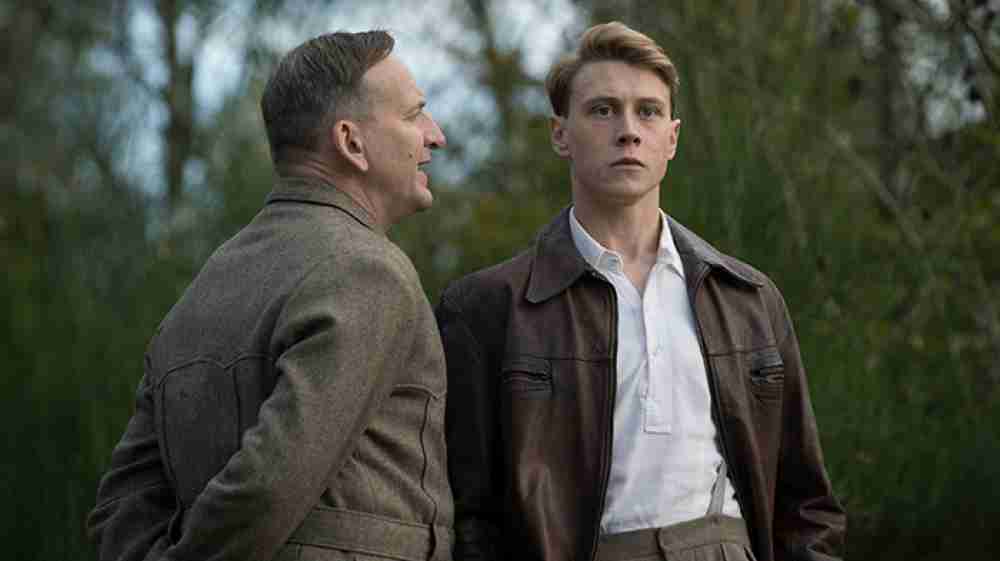
7R: Before the film was even seen, it faced backlash against what people assumed to be a sympathetic portrayal of a Nazi. It’s certainly a controversial central romance. Why did you feel it was important to explore such a difficult dynamic and ask the complex questions that it brings about, despite the risk that entails?
Amma Asante: I wanted to look at how Leyna was impacted by National Socialism, but I also wanted to look at how children outside of Leyna’s race and identity were exposed to it. National Socialism was an education through the Hitler Youth, schools, and other means. They would not allow parents to take responsibility for their children, by saying the children belong to the state and the state is responsible for their minds and their education. I wanted to look at how that education was used to craft hatred, training children up to kill fellow human beings. Those were formal structures that were used on developing minds.
[click_to_tweet tweet=”‘I wanted to look at how Leyna was impacted by National Socialism, but I also wanted to look at how children outside of Leyna’s race and identity were exposed to it.” quote=”‘I wanted to look at how Leyna was impacted by National Socialism, but I also wanted to look at how children outside of Leyna’s race and identity were exposed to it.”]
I wanted to look at how we use informal structures today — informal education — do the same thing. What does that formal education look like when we’re now using informal structures? I’m not, by any means, saying that we’re going to end up how 1940s Berlin ended up, but if we get halfway, even a quarter of a way to that point, we are harming fellow human beings and individuals.
[click_to_tweet tweet=”‘I wanted to look at how that education was used to craft hatred, training children up to kill fellow human beings. Those were formal structures that were used on developing minds.'” quote=”‘I wanted to look at how that education was used to craft hatred, training children up to kill fellow human beings. Those were formal structures that were used on developing minds.'”]
I also wanted a way to show that we, as people of colour, are rarely able to show a real scope and range. White men have the biggest platform for that. White women have less but more so than people of colour. When we come down to black women, we have to be utterly perfect or utterly terrible. I wanted to show that we are all capable, in the right condition, of being exposed to terrible things and responding to them, as children. The question is, when we know better, do we do better? I asked this question at the premiere: What did you know? When did you learn it? When you learned about it, what did you do? This is about two individuals who feel powerless as citizens. Another question I’m asking is: Are we ever powerless?
[click_to_tweet tweet=”‘People of colour are rarely able to show a real scope and range. Black women have to be utterly perfect or utterly terrible.'” quote=”‘People of colour are rarely able to show a real scope and range. Black women have to be utterly perfect or utterly terrible.'”]
The final reason to bring this love story in was I didn’t want to see her raped. I didn’t want to see her promiscuous and have a one night stand with someone that she didn’t have a relationship with. I wanted to see her decide.
We’ve covered many films that uncover untold pockets of history, telling the stories of often unsung marginalised people. Sophie and the Rising Sun is another story of an interracial relationship, this time in 1941 South Carolina. BPM chronicled the work of the French AIDS activism group Act Up, told by filmmaker Robin Campillo who lived through the movement. A recent TIFF hidden gem, Float Like a Butterfly, centred on a teenage girl in an Irish Travellers community in the ‘70s who dreams of becoming a great boxer. The lives of Indigenous people often go ignored in cinema, which is part of why we love films like the historical films Sami Blood (set in the 1940s), Sweet Country (set after WWI), and another TIFF ‘18 favourite, Falls Around Her.
